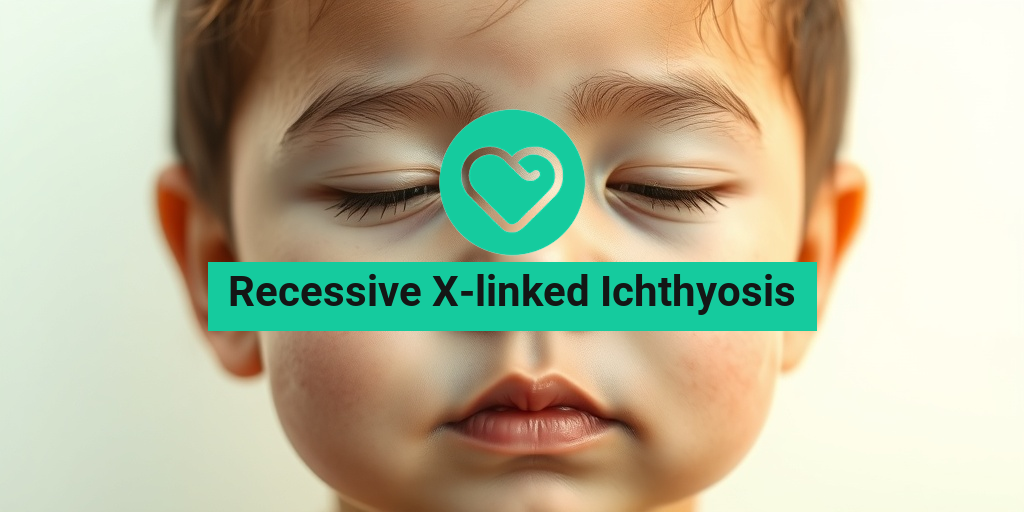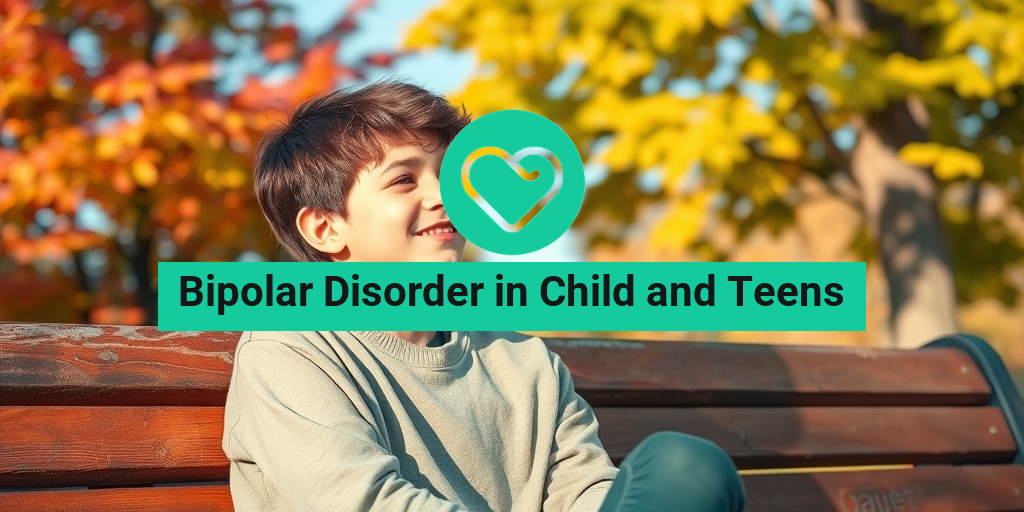What Is Recessive X-linked Ichthyosis?
Recessive X-linked ichthyosis is a rare genetic skin disorder that primarily affects males. It is caused by mutations in the STSL gene located on the X chromosome, which plays a crucial role in the skin’s ability to shed dead cells. This condition is classified as an X-linked recessive disorder, meaning that the gene responsible for the condition is located on the X chromosome, and males, who have only one X chromosome, are more severely affected than females, who have two X chromosomes and may be carriers without showing symptoms.
Individuals with recessive X-linked ichthyosis experience a buildup of thick, dry, and scaly skin, which can lead to discomfort and various complications. The severity of the symptoms can vary widely among affected individuals, and while the condition is lifelong, it is not life-threatening.
Understanding the Genetics
The genetic basis of recessive X-linked ichthyosis means that it is passed down through families. Males inherit the affected X chromosome from their mothers, who may be carriers of the mutation. Female carriers typically do not exhibit symptoms but can pass the condition to their sons. This inheritance pattern is a classic example of how X-linked recessive diseases operate.
Types of Ichthyosis
While recessive X-linked ichthyosis is one type, it is essential to differentiate it from other forms of ichthyosis, such as ichthyosis vulgaris. The symptoms and genetic causes can vary significantly, making accurate diagnosis crucial for effective management.
Symptoms of Recessive X-linked Ichthyosis
The symptoms of recessive X-linked ichthyosis typically manifest in early childhood, often becoming noticeable within the first year of life. Here are some of the most common symptoms:
- Dry, Scaly Skin: The hallmark of this condition is the presence of thick, dry, and scaly skin, particularly on the arms, legs, and trunk. The scales can vary in size and may appear grayish or brownish.
- Hyperkeratosis: This refers to the excessive buildup of keratin, a protein that protects the skin. In individuals with this condition, the skin may feel rough and may crack or peel.
- Skin Infections: Due to the compromised skin barrier, individuals may be more susceptible to bacterial and fungal infections.
- Eye Issues: Some individuals may experience problems with their eyes, such as dryness or irritation, which can lead to complications if not managed properly.
- Heat Intolerance: The thickened skin can impair the body’s ability to regulate temperature, leading to heat intolerance, especially in hot weather.
Variability in Symptoms
It’s important to note that the severity of symptoms can vary significantly from person to person. Some individuals may have mild symptoms that require minimal treatment, while others may experience more severe manifestations that necessitate ongoing medical care.
Diagnosis and Management
Diagnosis of recessive X-linked ichthyosis typically involves a thorough clinical examination and family history assessment. Genetic testing can confirm the presence of mutations in the STSL gene, providing a definitive diagnosis. Management focuses on alleviating symptoms and may include:
- Moisturizers: Regular application of emollients can help hydrate the skin and reduce scaling.
- Exfoliating Agents: Products containing urea or alpha-hydroxy acids may be recommended to help remove dead skin cells.
- Sun Protection: Individuals should take precautions against sun exposure, as their skin may be more sensitive.
For more comprehensive information and resources, consider visiting Yesil Health AI, where you can find evidence-based answers to your health questions.
In conclusion, while recessive X-linked ichthyosis can present challenges, understanding the condition and its symptoms can empower individuals and families to seek appropriate care and support. With the right management strategies, those affected can lead fulfilling lives despite the condition. 🌟

Causes of Recessive X-linked Ichthyosis
Recessive X-linked Ichthyosis (RXLI) is a genetic skin disorder primarily caused by mutations in the STSL gene located on the X chromosome. This condition is characterized by dry, scaly skin that can vary in severity. Understanding the underlying causes of RXLI is crucial for both diagnosis and management.
Genetic Mutations
The primary cause of recessive X-linked ichthyosis is a mutation in the STSL gene, which is responsible for producing an enzyme called steroid sulfatase. This enzyme plays a vital role in breaking down steroid sulfates, which are essential for maintaining healthy skin. When the STSL gene is mutated, the production of steroid sulfatase is impaired, leading to an accumulation of steroid sulfates in the skin. This accumulation disrupts the normal skin barrier function, resulting in the characteristic dry and scaly skin associated with RXLI.
Inheritance Pattern
As the name suggests, RXLI follows an X-linked recessive inheritance pattern. This means that the mutated gene is located on the X chromosome, and males (who have only one X chromosome) are more severely affected than females. Females have two X chromosomes, so if one X chromosome carries the mutation, the other can often compensate, making them carriers without showing significant symptoms. However, female carriers can still pass the mutated gene to their offspring.
Impact of Hormonal Changes
Interestingly, hormonal changes can also influence the severity of symptoms in individuals with RXLI. For example, during puberty or pregnancy, hormonal fluctuations may exacerbate the skin condition, leading to increased dryness and scaling. This highlights the complex interplay between genetics and environmental factors in the manifestation of recessive X-linked ichthyosis.
Risk Factors for Recessive X-linked Ichthyosis
While the primary cause of recessive X-linked ichthyosis is genetic, certain risk factors can increase the likelihood of developing this condition. Understanding these risk factors can help in early diagnosis and management.
Family History
A significant risk factor for RXLI is a family history of the condition. If a male relative has been diagnosed with recessive X-linked ichthyosis, there is a higher chance that female family members may be carriers of the mutated gene. Genetic counseling is often recommended for families with a history of RXLI to assess the risk of passing the condition to future generations.
Gender
As RXLI is an X-linked condition, males are at a higher risk of being affected. Since males have only one X chromosome, a single mutated copy of the STSL gene will result in the disease. In contrast, females, who have two X chromosomes, may be carriers without showing symptoms. This gender disparity is a crucial factor in understanding the prevalence of RXLI.
Ethnicity
Research indicates that certain ethnic groups may have a higher prevalence of recessive X-linked ichthyosis. For instance, individuals of European descent are more likely to be affected compared to those from other ethnic backgrounds. This suggests that genetic variations within different populations can influence the occurrence of RXLI.
Carrier Status
Female carriers of the STSL gene mutation are at risk of passing the condition to their sons. Each son has a 50% chance of inheriting the mutated gene, while daughters have a 50% chance of becoming carriers themselves. Understanding carrier status is essential for family planning and genetic counseling.
In conclusion, recessive X-linked ichthyosis is primarily caused by mutations in the STSL gene, with various risk factors influencing its prevalence and severity. Awareness of these causes and risk factors can aid in early diagnosis and management, ultimately improving the quality of life for those affected by this condition. 🌟

Diagnosis of Recessive X-linked Ichthyosis
Diagnosing Recessive X-linked Ichthyosis (RXLI) can be a complex process, primarily because its symptoms can often resemble those of other skin conditions. This genetic disorder is characterized by dry, scaly skin due to a deficiency in the enzyme steroid sulfatase. Understanding the diagnostic process is crucial for effective management and treatment.
Clinical Evaluation
The first step in diagnosing RXLI typically involves a thorough clinical evaluation. A healthcare provider will assess the patient’s medical history and conduct a physical examination. Key symptoms to look for include:
- Dry, scaly skin: This is the hallmark of RXLI, often appearing as thickened patches.
- Skin color changes: The skin may appear darker or have a different texture compared to unaffected areas.
- Family history: Since RXLI is inherited in an X-linked recessive pattern, a family history of similar symptoms can be a significant indicator.
Genetic Testing
Once a clinical evaluation suggests RXLI, genetic testing is often recommended to confirm the diagnosis. This involves:
- Blood tests: A sample of the patient’s blood is analyzed to identify mutations in the STS gene, which is responsible for producing the steroid sulfatase enzyme.
- Carrier testing: For family members, especially female carriers, genetic testing can help determine if they carry the gene mutation.
Genetic counseling is also an essential part of the diagnostic process, providing families with information about inheritance patterns and implications for future pregnancies.
Distinguishing from Other Conditions
It’s important to differentiate RXLI from other similar skin disorders, such as Ichthyosis Vulgaris and Syndromic Recessive X-linked Ichthyosis. While both conditions involve dry skin, they have different genetic causes and implications. A dermatologist may use specific diagnostic criteria and tests to make this distinction.
Treatment Options for Recessive X-linked Ichthyosis
While there is currently no cure for Recessive X-linked Ichthyosis, various treatment options can help manage symptoms and improve the quality of life for those affected. The primary focus is on alleviating skin dryness and scaling.
Topical Treatments
Topical therapies are often the first line of treatment for RXLI. These include:
- Moisturizers: Regular application of emollients can help hydrate the skin and reduce scaling. Look for products containing urea or lactic acid for added effectiveness.
- Exfoliating agents: Creams with alpha-hydroxy acids (AHAs) can help remove dead skin cells and improve skin texture.
Systemic Treatments
In more severe cases, systemic treatments may be considered. These can include:
- Oral retinoids: Medications like isotretinoin can help normalize skin cell turnover, although they come with potential side effects and require careful monitoring.
- Hormonal therapies: In some cases, hormonal treatments may be explored, particularly if there are associated symptoms affecting other systems.
Supportive Care
In addition to medical treatments, supportive care plays a vital role in managing RXLI. This can include:
- Education: Patients and families should be educated about the condition, its management, and the importance of regular follow-ups.
- Psychosocial support: Counseling or support groups can help individuals cope with the emotional aspects of living with a chronic skin condition.
Overall, a multidisciplinary approach involving dermatologists, geneticists, and other healthcare professionals can provide comprehensive care for individuals with Recessive X-linked Ichthyosis. By tailoring treatment plans to individual needs, patients can achieve better skin health and improved quality of life. 🌟

Living with Recessive X-linked Ichthyosis
Recessive X-linked Ichthyosis (RXLI) is a rare genetic skin disorder that primarily affects males, leading to dry, scaly skin. This condition is caused by mutations in the STS gene, which is responsible for producing an enzyme called steroid sulfatase. The absence of this enzyme disrupts the normal shedding of skin cells, resulting in the characteristic symptoms of RXLI. Living with this condition can present unique challenges, but understanding its implications can empower individuals and families to manage it effectively.
Understanding the Symptoms
The symptoms of recessive X-linked ichthyosis can vary in severity, but they typically include:
- Dry, scaly skin: The skin often appears thickened and may have a rough texture, particularly on the arms, legs, and trunk.
- Dark, brownish scales: These scales can be more pronounced in certain areas, leading to a noticeable appearance.
- Increased sensitivity: Individuals may experience heightened sensitivity to temperature changes and irritants.
- Potential for skin infections: The compromised skin barrier can make individuals more susceptible to infections.
Daily Management Strategies
Managing recessive X-linked ichthyosis involves a combination of skincare routines and lifestyle adjustments. Here are some effective strategies:
- Moisturization: Regularly applying emollients and moisturizers can help alleviate dryness and scaling. Look for products that contain ingredients like urea or glycerin for optimal hydration.
- Gentle cleansing: Use mild, fragrance-free cleansers to avoid further irritation. Hot water can exacerbate dryness, so opt for lukewarm baths or showers.
- Sun protection: Individuals with RXLI may be more prone to sunburn. Applying sunscreen with a high SPF and wearing protective clothing can help shield the skin from harmful UV rays.
- Regular dermatological check-ups: Routine visits to a dermatologist can help monitor skin health and address any concerns promptly.
Emotional and Social Considerations
Living with a visible skin condition can impact self-esteem and social interactions. It’s essential to foster a supportive environment:
- Education: Educating family, friends, and peers about RXLI can help reduce stigma and promote understanding.
- Support groups: Connecting with others who have similar experiences can provide emotional support and practical advice.
- Open communication: Encourage open discussions about feelings and challenges related to the condition, fostering a sense of community and belonging.
Future Research and Outlook
The future of research into recessive X-linked ichthyosis holds promise, with ongoing studies aimed at better understanding the condition and improving treatment options. As genetic research advances, several key areas are being explored:
Genetic Therapies
One of the most exciting prospects in the field of genetic disorders is the development of gene therapies. Researchers are investigating ways to correct the underlying genetic mutations responsible for RXLI. While still in the experimental stages, these therapies could potentially offer a long-term solution for affected individuals.
Improved Treatment Options
Current treatments primarily focus on managing symptoms. However, ongoing research aims to identify new topical treatments that could enhance skin hydration and barrier function. Innovations in dermatological formulations may lead to more effective products tailored specifically for individuals with RXLI.
Awareness and Advocacy
As awareness of recessive X-linked ichthyosis grows, advocacy efforts are becoming increasingly important. Organizations dedicated to rare diseases are working to:
- Raise awareness: Increasing public knowledge about RXLI can lead to better understanding and support for those affected.
- Support research funding: Advocating for funding can accelerate research initiatives aimed at finding effective treatments.
- Connect families: Providing resources and support networks for families affected by RXLI can help them navigate the challenges of the condition.
In conclusion, living with recessive X-linked ichthyosis presents unique challenges, but with the right management strategies and support, individuals can lead fulfilling lives. The future of research offers hope for improved treatments and a deeper understanding of this condition, paving the way for better outcomes for those affected. 🌟

Frequently Asked Questions about Recessive X-linked Ichthyosis
What is Recessive X-linked Ichthyosis?
Recessive X-linked Ichthyosis is a genetic skin disorder characterized by dry, scaly skin. It is caused by mutations in the STS gene located on the X chromosome, leading to a deficiency in the enzyme steroid sulfatase.
How is Recessive X-linked Ichthyosis inherited?
This condition is inherited in an X-linked recessive manner, meaning that the gene causing the disorder is located on the X chromosome. Males are more severely affected because they have only one X chromosome, while females can be carriers and may exhibit milder symptoms.
What are the symptoms of Recessive X-linked Ichthyosis?
- Dry, scaly skin
- Thickened skin on the palms and soles
- Possible involvement of the scalp and other areas
- Increased sensitivity to heat
Is there a treatment for Recessive X-linked Ichthyosis?
While there is no cure for Recessive X-linked Ichthyosis, treatment focuses on managing symptoms. This may include:
- Moisturizers to hydrate the skin
- Exfoliating agents to reduce scaling
- Regular dermatological care
How does Recessive X-linked Ichthyosis differ from Ichthyosis Vulgaris?
Recessive X-linked Ichthyosis and Ichthyosis Vulgaris are both skin disorders, but they have different genetic causes and inheritance patterns. Ichthyosis Vulgaris is typically inherited in an autosomal dominant manner and is often less severe than X-linked Ichthyosis.
Can female carriers of Recessive X-linked Ichthyosis show symptoms?
Yes, female carriers may exhibit mild symptoms of Recessive X-linked Ichthyosis, but they often do not experience the full severity of the condition. Their symptoms can vary widely.
Are there any associated health concerns with Recessive X-linked Ichthyosis?
Individuals with Recessive X-linked Ichthyosis may have an increased risk of certain health issues, such as:
- Eye problems, including corneal opacities
- Potential for heat intolerance
Where can I find more information about Recessive X-linked Ichthyosis?
For more detailed information, consider visiting reputable medical websites, consulting with a dermatologist, or connecting with support groups focused on ichthyosis and related skin disorders.




